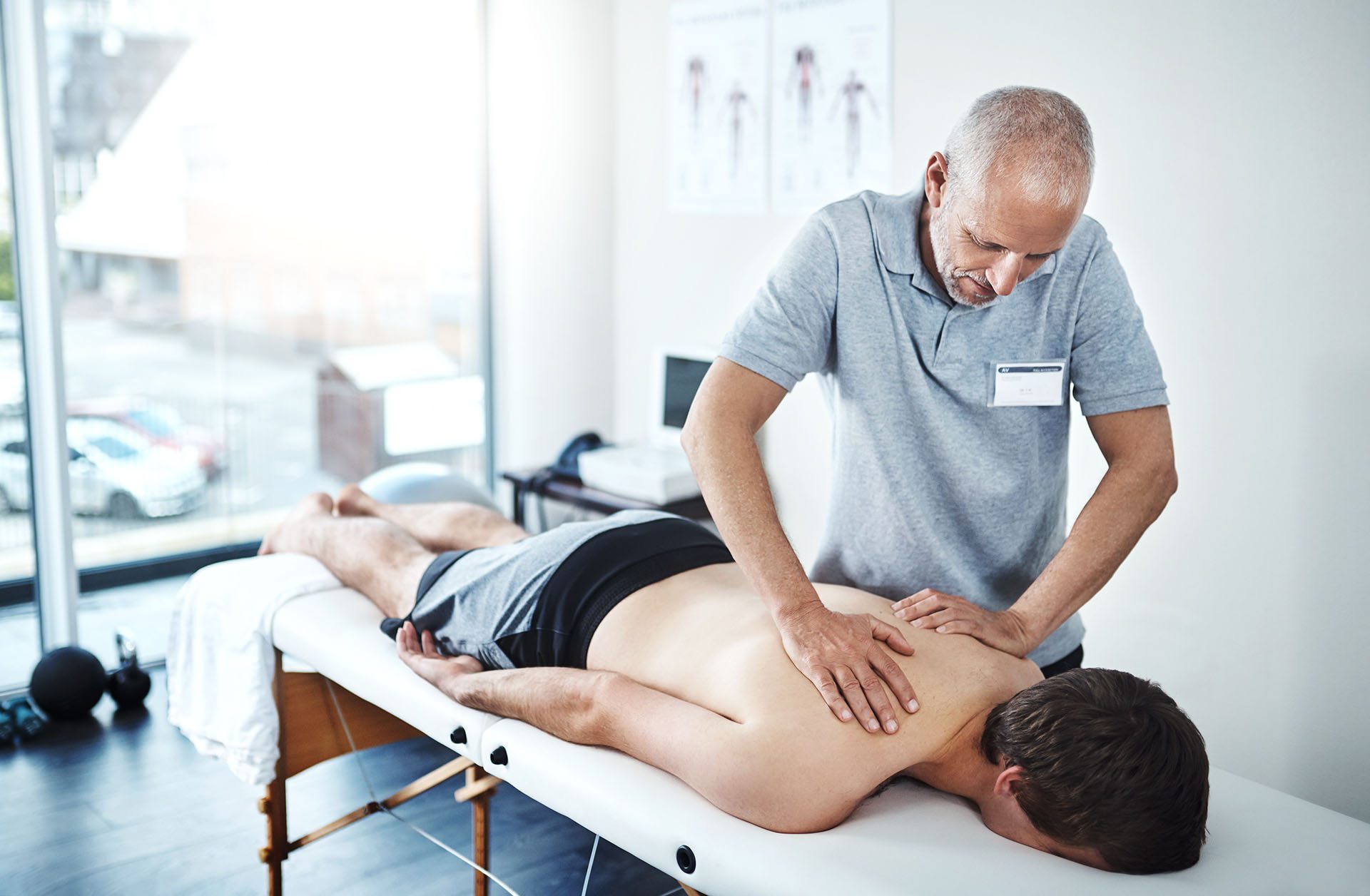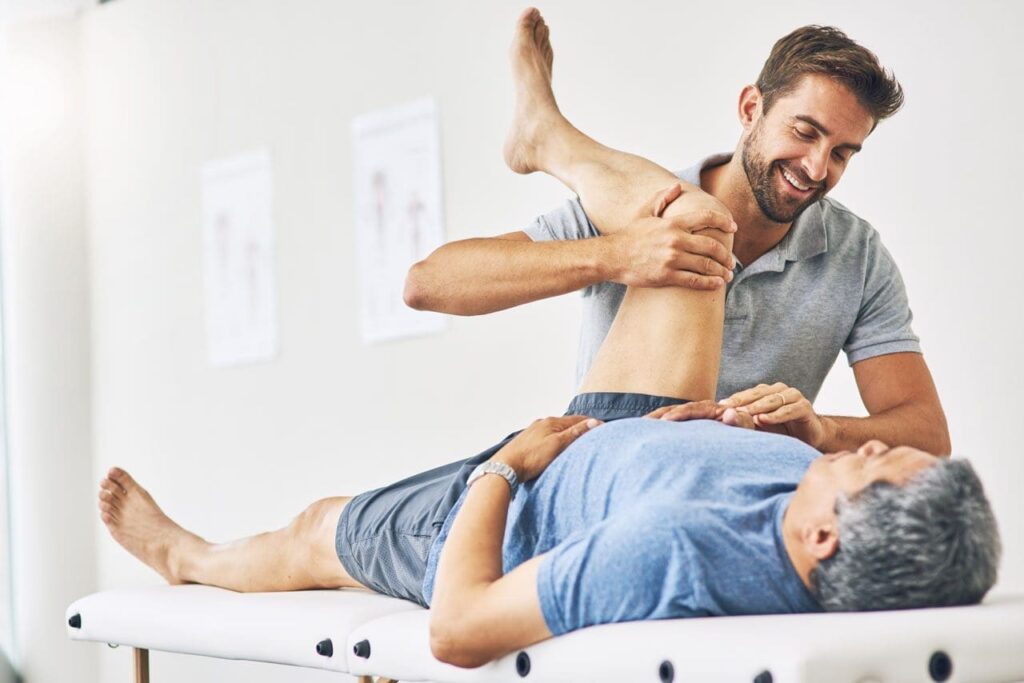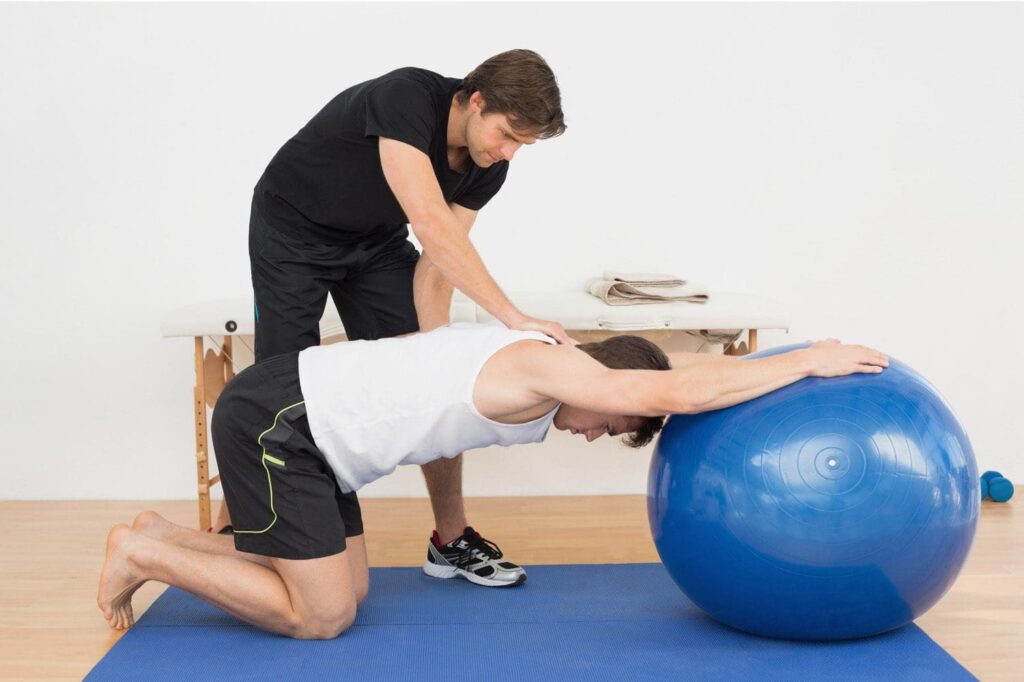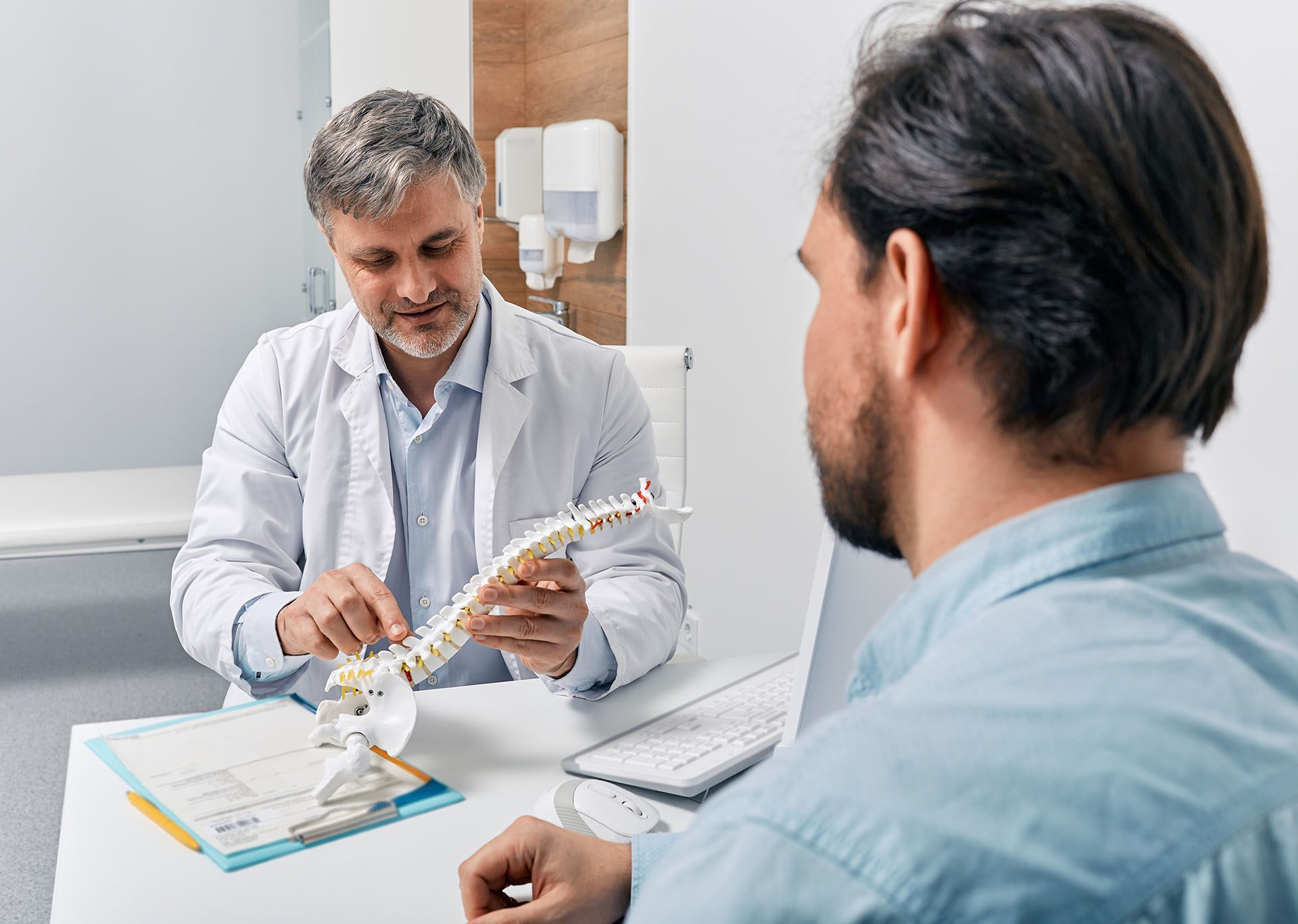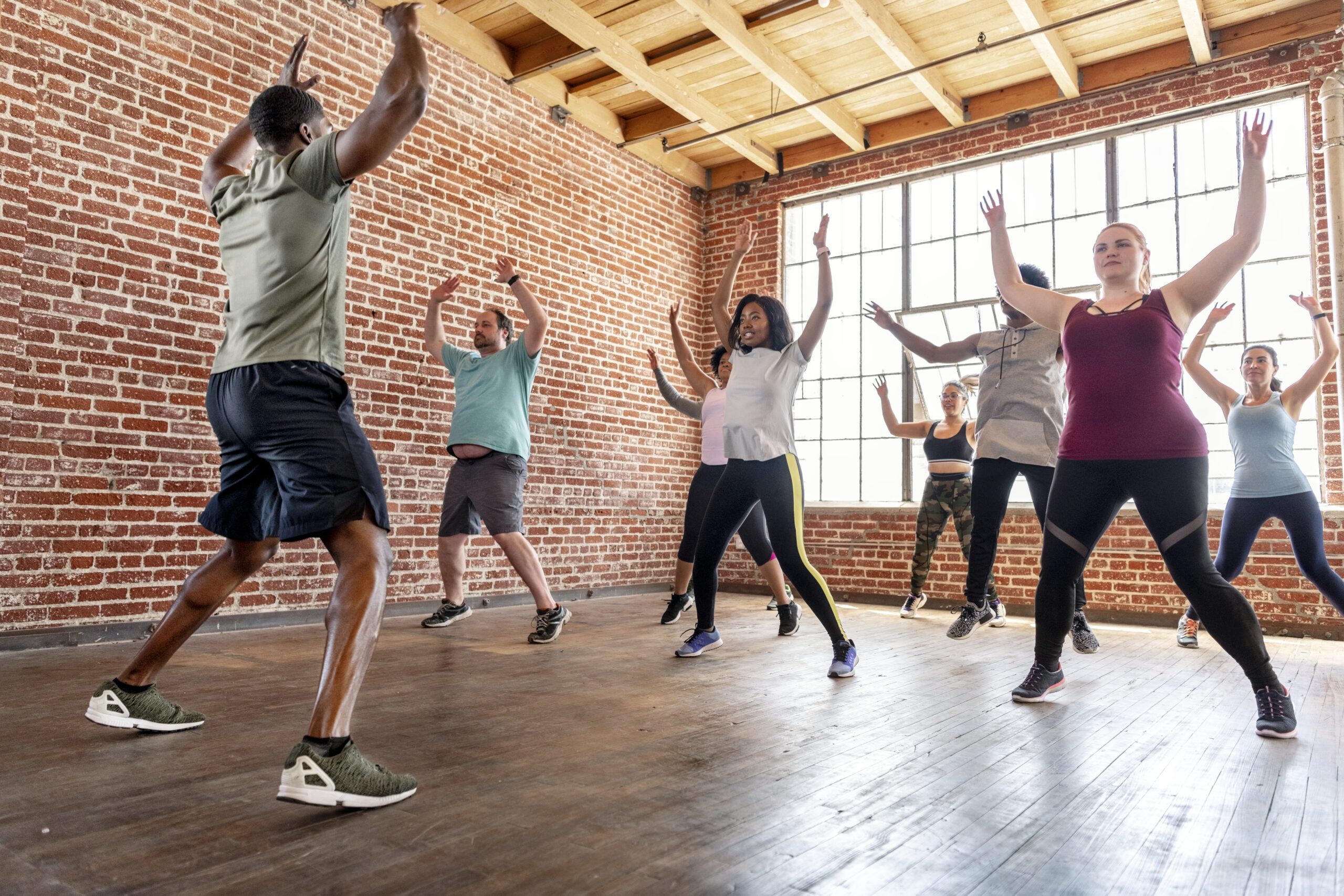Chiropractic Care Benefits Explained for Cervical Lordosis
Transform your posture with chiropractic care for cervical lordosis. Discover personalized strategies for pain relief and wellness.
Understanding Cervical Lordosis and Whiplash: How Chiropractic Care in El Paso Can Help
Welcome to the wild and wobbly world of neck health! If you’ve ever been in a car accident and felt your neck scream louder than a karaoke night gone wrong, you might be dealing with whiplash and its pesky sidekick, loss of cervical lordosis. Don’t worry, though—help is at hand, especially in El Paso, TX, where chiropractic care, led by the esteemed Dr. Alexander Jimenez, DC, APRN, FNP-BC, is ready to provide relief. In this comprehensive guide, we’ll explore what cervical lordosis is, how whiplash throws it out of whack, and why chiropractic care, paired with other non-surgical treatments, is your ticket to a pain-free neck. We’ll also sprinkle in some practical tips for tweaking your daily routine, highlight why Dr. Jimenez is El Paso’s go-to for personal injury cases, and throw in a dash of humor to keep things light. So, grab a comfy seat (and maybe a neck pillow), and let’s dive in!
What Is Cervical Lordosis, and Why Should You Care?
Picture your neck as a fancy suspension bridge, elegantly curved to hold up the weight of your head, which, by the way, weighs about as much as a bowling ball (10–12 pounds, for those keeping score). This natural inward curve of the cervical spine, comprising the top seven vertebrae, is known as cervical lordosis. It starts forming when you’re just a tiny human, around 10 months old, and solidifies during childhood and adolescence (Jimenez, 2017). This curve isn’t just there to look pretty—it’s a biomechanical marvel that helps you balance, move, and carry that heavy head without toppling over like a Jenga tower.
When cervical lordosis is in tip-top shape, it’s like a well-tuned guitar string, keeping everything in harmony. But when this curve flattens or reverses into something called kyphosis, it’s like replacing that string with a rubber band—things get wonky fast. Loss of cervical lordosis can lead to a laundry list of symptoms that make life less than fun:
- Neck pain and stiffness: Your neck might feel like it’s been replaced with a rusty door hinge.
- Headaches: Ranging from “annoying buzz” to “full-on rock concert in your skull.”
- Numbness or tingling in the arms or hands: A sign that nerves are getting pinched, like a kinked garden hose.
- Dizziness or vertigo: Making you feel like you’re stuck on a never-ending carnival ride.
- Premature degeneration or arthritis: A flattened or reversed curve can speed up wear and tear, setting the stage for long-term damage (Jimenez, 2017).
These symptoms aren’t just a pain in the neck (sorry, had to)—they can seriously cramp your style, affecting everything from work to sleep to your ability to enjoy a good TikTok scroll.
References:
- Jimenez, A. (2017). Whiplash chiropractor: Loss of cervical lordosis. El Paso’s Personal Injury Doctors. https://dralexjimenez.com/whiplash-chiropractor-loss-of-cervical-lordosis/
- Fishman, L. M., & Dombi, G. W. (2017). Neck pain: Initial evaluation and management. American Family Physician, 96(3), 180–187. https://pubmed.ncbi.nlm.nih.gov/28762688/
Whiplash: The Neck’s Not-So-Fun Rollercoaster Ride
Imagine you’re cruising down I-10 in El Paso, belting out your favorite song, when—WHAM!—a rear-end collision sends your head whipping back and forth like a bobblehead in a windstorm. That’s whiplash, and it’s about as fun as stepping on a Lego. Whiplash is the sudden, forceful back-and-forth motion of the head and neck, most commonly caused by car accidents but also possible in sports mishaps or that time you tried to “dance like nobody’s watching” and fell off the couch (Jimenez, 2024).
This violent motion puts your cervical spine through its paces, stretching muscles, ligaments, and tendons beyond their normal range of motion. It’s like yanking a rubber band too far—something’s bound to snap or, in this case, misalign. Whiplash can disrupt the natural cervical lordosis, causing the curve to flatten or even reverse, which triggers a cascade of symptoms. Research suggests that up to 60% of whiplash patients develop degenerative changes in the cervical spine due to this loss of curvature, essentially fast-tracking arthritis (Jimenez, 2017).
Here’s how whiplash wreaks havoc:
- Muscle and ligament strain: Overstretching leads to spasms and inflammation, pulling vertebrae out of alignment like a misbehaving puzzle piece.
- Vertebral misalignment: The cervical spine’s delicate structure can shift, flattening or reversing the lordotic curve.
- Nerve compression: A disrupted curve can pinch nerves, causing pain, numbness, or tingling that radiates to the arms or hands.
The sneaky part? Whiplash symptoms can play hide-and-seek. You might feel fine right after the accident, only to wake up the next day feeling like your neck’s been replaced with a concrete block. That’s why early intervention is crucial, and that’s where chiropractic care takes center stage.
References:
- Jimenez, A. (2017). Whiplash chiropractor: Loss of cervical lordosis. El Paso’s Personal Injury Doctors. https://dralexjimenez.com/whiplash-chiropractor-loss-of-cervical-lordosis/
- Hauser, R. (2025). Loss of cervical lordosis from a car accident. Caring Medical. https://caringmedical.com/
- Jimenez, A. (2024). Cervical lordosis & its connection to whiplash injury. John Phillips Law. https://www.johnphillipslaw.com/
Environmental Factors That Make Your Neck Grumpy
Whiplash might be the headliner, but it’s not the only thing that can mess with your cervical lordosis. Everyday habits and environmental factors can quietly chip away at your neck’s natural curve, turning it into a cranky, achy mess. Let’s meet the usual suspects:
- Poor Posture (aka Tech Neck): If you spend hours hunched over your phone or laptop, looking like you’re trying to win a staring contest with your screen, you’re guilty of tech neck. This forward head posture strains neck muscles and pulls the cervical spine out of alignment, like trying to balance a bowling ball on a wobbly stick (Jimenez, 2017).
- Sedentary Lifestyle: Sitting at a desk all day without breaks is like asking your neck to run a marathon without training. It causes muscle imbalances—some muscles tighten, others weaken—disrupting the cervical curve.
- Bad Sleep Setup: Sleeping with a stack of pillows or one that’s too high can force your neck into awkward positions, like trying to sleep with your head tilted back at a rock concert. Over time, this can flatten the curve.
- Stress: Chronic stress makes you clench your jaw and shoulders, and your neck muscles take the hit. Tight muscles can pull on the vertebrae, contributing to misalignment.
- Osteoporosis: This bone-weakening condition makes the cervical spine more vulnerable to abnormal curvature, especially after trauma like whiplash (Jimenez, 2024).
- Repetitive Motions: Jobs or hobbies involving repetitive neck movements—like painting ceilings or playing tennis—can strain the cervical spine, gradually eroding the curve.
These factors don’t just cause neck pain; they can amplify the effects of whiplash, making recovery a bigger challenge. The good news? You can tackle many of these with simple changes, which we’ll cover later, courtesy of Dr. Jimenez’s clinical wisdom.
References:
- Jimenez, A. (2017). Whiplash chiropractor: Loss of cervical lordosis. El Paso’s Personal Injury Doctors. https://dralexjimenez.com/whiplash-chiropractor-loss-of-cervical-lordosis/
- Jimenez, A. (2024). Whiplash specialist: Identifying loss of cervical curvature. El Paso Back Clinic. https://elpasobackclinic.com/
- Ferrantelli, J. R., & Harrison, D. E. (2019). Re-establishing the cervical lordosis after whiplash: A Chiropractic Biophysics® spinal corrective care methods pre-auto injury and post-auto injury case report with follow-up. ResearchGate. https://www.researchgate.net/
The Cervical Spine: Your Body’s Unsung Hero
The cervical spine is like the quiet kid in class who does all the heavy lifting without asking for credit. Made up of seven vertebrae (C1 to C7), it’s a multitasking marvel that:
- Supports your head: That 10–12-pound bowling ball we mentioned? The cervical spine keeps it upright.
- Protects the spinal cord: It’s like a fortress for the nerves that control sensation and movement in your arms, hands, and upper body.
- Enables mobility: It lets you nod at a friend, shake your head at a bad pun, or check your blind spot while driving.
- Connects to the autonomic nervous system: The upper cervical spine is near the brainstem and vagus nerve, which regulate heart rate, digestion, and other “behind-the-scenes” functions (Ideal Spine, 2025).
When whiplash or environmental factors disrupt this delicate system, the effects can ripple far beyond neck pain. You may experience headaches, dizziness, or trouble concentrating, as cervical spine misalignment can affect nerve function and blood flow (Johns Hopkins Medicine, 2023). Restoring the cervical curve isn’t just about feeling better—it’s about keeping your whole body in sync.
References:
- Ideal Spine. (2025). The link between cervical lordosis loss and the autonomic nervous system. Ideal Spine. https://idealspine.com/
- Johns Hopkins Medicine. (2023). Neck pain. PubMed. https://pubmed.ncbi.nlm.nih.gov/28250631/
Why Chiropractic Care Is Your Neck’s New Best Friend
Now, let’s talk about the superhero of this story: chiropractic care. At ChiroMed in El Paso, Dr. Alexander Jimenez and his team specialize in fixing necks that have been through the wringer, especially after whiplash. Here’s the clinical rationale for why chiropractic care is a game-changer for cervical lordosis and whiplash-related pain:
- Restoring Alignment: Chiropractic adjustments use precise, gentle force to realign the cervical vertebrae, helping to restore the natural lordotic curve. A 2019 study found that 3.5 months of chiropractic adjustments significantly improved cervical lordosis in whiplash patients (Ferrantelli & Harrison, 2019).
- Easing Muscle Tension: Whiplash causes muscle spasms that pull the spine out of whack. Chiropractic techniques, like spinal manipulation and soft tissue therapy, relax these muscles, reducing strain on the vertebrae.
- Relieving Nerve Pressure: Misalignments (subluxations) can pinch nerves, causing pain or tingling. Chiropractic care corrects these, restoring nerve function and banishing those “pins and needles” sensations.
- Preventing Long-Term Damage: A 2005 study found that patients with neck pain were 18 times more likely to have a loss of cervical lordosis, making curve restoration a key goal of chiropractic treatment (McAviney et al., 2005). Early intervention can prevent arthritis and other degenerative changes.
- Holistic Healing: Dr. Jimenez combines chiropractic adjustments with other therapies like physical therapy, acupuncture, and nutrition counseling to tackle pain from all angles (ChiroMed, 2025).
Think of chiropractic care as a tune-up for your spine. Just like you’d take your car to a mechanic after a fender-bender, your neck deserves the same VIP treatment after whiplash. And with Dr. Jimenez’s expertise, you’re in for a five-star experience.
References:
- Ferrantelli, J. R., & Harrison, D. E. (2019). Re-establishing the cervical lordosis after whiplash: A Chiropractic Biophysics® spinal corrective care methods pre-auto injury and post-auto injury case report with follow-up. ResearchGate. https://www.researchgate.net/
- McAviney, J., Schulz, D., Bock, R., Harrison, D. E., & Holland, B. (2005). Determining the relationship between cervical lordosis and neck complaints. Journal of Manipulative and Physiological Therapeutics, 28(3), 187–193. https://pubmed.ncbi.nlm.nih.gov/15800509/
- ChiroMed. (2025). ChiroMed – Integrated Medicine Holistic Healthcare in El Paso, TX. https://chiromed.com/
Chiropractic Care for Neck Pain Relief- Video
Non-Surgical Treatments to Supercharge Your Recovery
Chiropractic care is the MVP, but it shines even brighter when teamed up with other non-surgical treatments. At ChiroMed, Dr. Jimenez offers a holistic approach that tackles neck pain and cervical lordosis loss from multiple angles. Here’s how these treatments work together to reduce pain and restore function:
- Physical Therapy: Targeted exercises strengthen neck muscles, improve flexibility, and support the cervical curve. Postural-correction exercises can counteract tech neck, helping you stand tall like a superhero (Clear Institute, 2025).
- Acupuncture: This ancient technique reduces pain and inflammation by stimulating specific points, complementing chiropractic adjustments like peanut butter complements jelly (ChiroMed, 2025).
- Nutrition Counseling: Inflammation can exacerbate neck pain. A diet rich in anti-inflammatory foods—like salmon, spinach, and berries—supports healing and reduces pain sensitivity (ChiroMed, 2025).
- Massage Therapy: Massage relaxes tight muscles and boosts blood flow, making it easier for chiropractic adjustments to stick (ChiroMed, 2025).
- Rehabilitation Programs: Customized rehab plans focus on restoring function and preventing re-injury, especially for whiplash victims (ChiroMed, 2025).
These treatments are like the Avengers of neck health—each brings a unique power, but together, they’re unstoppable.
References:
- Clear Institute. (2025). Understanding loss of cervical lordosis: Causes and effects. Clear Institute. https://clear-institute.org/
- ChiroMed. (2025). ChiroMed – Integrated Medicine Holistic Healthcare in El Paso, TX. https://chiromed.com/
Dr. Alexander Jimenez: El Paso’s Personal Injury Rockstar
In the world of personal injury care in El Paso, Dr. Alexander Jimenez is a rockstar—think Beyoncé, but for spines. With over 25 years of experience as a board-certified Family Practice Nurse Practitioner and Chiropractor, Dr. Jimenez is uniquely qualified to help victims of auto accidents and other injuries. Here’s why he’s the go-to guy:
- Advanced Imaging and Diagnostics: Dr. Jimenez uses cutting-edge tools like X-rays, CT scans, and MRIs to assess cervical lordosis and whiplash injuries. These provide objective evidence of damage, crucial for both treatment and legal claims (Jimenez, 2024).
- Dual-Scope Expertise: As both a chiropractor and a nurse practitioner, Dr. Jimenez bridges the gap between medical care and legal support. He provides detailed clinical evaluations that serve as evidence in personal injury cases, helping victims secure fair compensation (ChiroMed, 2025).
- Holistic Care Plans: At ChiroMed, Dr. Jimenez integrates chiropractic adjustments, physical therapy, acupuncture, and nutrition counseling into personalized treatment plans that address the whole patient (ChiroMed, 2025).
- Legal-Medical Liaison: His ability to translate complex medical findings into clear, actionable reports makes him a vital asset in personal injury cases. He ensures attorneys and insurance companies understand the full impact of injuries (Jimenez, 2024).
Whether you’re dealing with neck pain from a minor fender-bender or seeking justice for a serious injury, Dr. Jimenez has your back (and neck!).
References:
- Jimenez, A. (2024). Cervical lordosis & its connection to whiplash injury. John Phillips Law. https://www.johnphillipslaw.com/
- ChiroMed. (2025). ChiroMed – Integrated Medicine Holistic Healthcare in El Paso, TX. https://chiromed.com/
- Jimenez, A. (2025). LinkedIn Profile. https://www.linkedin.com/in/dralexjimenez/
Small Changes for a Happier Neck
Recovery isn’t just about what happens at ChiroMed—it’s about the little tweaks you make at home. Dr. Jimenez shares practical, evidence-based tips to support your cervical health and prevent further damage:
- Fix Your Posture: Keep your computer screen at eye level and sit with your shoulders back. Channel your inner superhero—chest out, head high!
- Take Breaks: If you’re desk-bound, set a timer to stand and stretch every 30 minutes. It’s like giving your neck a coffee break.
- Sleep Smart: Use a single, supportive pillow that keeps your neck aligned with your spine. No more pillow forts!
- Stay Active: Gentle exercises like yoga or swimming strengthen neck muscles and improve flexibility. Think of it as a gym session for your neck.
- Manage Stress: Try deep breathing or meditation to relax tense neck muscles. Tell your neck, “Take a chill pill.”
- Eat and Drink Well: Stay hydrated and eat anti-inflammatory foods like salmon and leafy greens to support tissue healing (ChiroMed, 2025).
These small changes are like adding a pinch of spice to a recipe—they seem minor but can transform your neck health.
References:
- ChiroMed. (2025). ChiroMed – Integrated Medicine Holistic Healthcare in El Paso, TX. https://chiromed.com/
- Fishman, L. M., & Dombi, G. W. (2017). Neck pain: Initial evaluation and management. American Family Physician, 96(3), 180–187. https://pubmed.ncbi.nlm.nih.gov/28762688/
Personal Injury Care in El Paso: Why It Matters
El Paso’s busy roads mean car accidents are a reality, and personal injury cases, especially those involving whiplash, are all too common. Neck pain and loss of cervical lordosis can disrupt your work, hobbies, and even sleep, turning life into a real headache (literally). That’s where specialized care comes in.
Dr. Jimenez and his team at ChiroMed go beyond treating injuries—they provide comprehensive support, from diagnosis to legal documentation. Using advanced imaging and diagnostic evaluations, Dr. Jimenez ensures every injury is thoroughly documented, which is critical for insurance claims and legal proceedings. His dual expertise as a chiropractor and nurse practitioner makes him a bridge between medical care and legal advocacy, ensuring patients get both healing and justice.
In a tight-knit community like El Paso, having a trusted practitioner like Dr. Jimenez makes all the difference. He’s not just fixing necks—he’s helping people reclaim their lives.
References:
- Jimenez, A. (2024). Cervical lordosis & its connection to whiplash injury. John Phillips Law. https://www.johnphillipslaw.com/
- ChiroMed. (2025). ChiroMed – Integrated Medicine Holistic Healthcare in El Paso, TX. https://chiromed.com/
Conclusion
Loss of cervical lordosis from whiplash is a serious issue, but with the right care, recovery is achievable. Chiropractic care, combined with non-surgical treatments such as physical therapy, acupuncture, and nutrition counseling, provides a holistic approach to restoring the cervical curve and alleviating pain. Dr. Alexander Jimenez and his team at ChiroMed in El Paso, TX, lead the way with personalized, evidence-based care that addresses both the physical and legal aspects of personal injury cases. By making small changes to your daily routine—such as improving posture or managing stress—you can support your recovery and maintain a healthy neck.
Disclaimer: This blog post is for informational purposes only and is not a substitute for professional medical advice. Always consult a qualified healthcare provider, such as a chiropractor or physician, before starting any treatment. The information provided is based on clinical insights and research, but should not be taken as medical advice without personalized evaluation. For specific concerns about neck pain or whiplash, contact Dr. Alexander Jimenez at ChiroMed (+1 (915) 412-6680 or support@chiromed.com) to discuss your needs.
References:
- Jimenez, A. (2017). Whiplash chiropractor: Loss of cervical lordosis. El Paso’s Personal Injury Doctors. https://dralexjimenez.com/whiplash-chiropractor-loss-of-cervical-lordosis/
- ChiroMed. (2025). ChiroMed – Integrated Medicine Holistic Healthcare in El Paso, TX. https://chiromed.com/
- Jimenez, A. (2025). LinkedIn Profile. https://www.linkedin.com/in/dralexjimenez/
- Fishman, L. M., & Dombi, G. W. (2017). Neck pain: Initial evaluation and management. American Family Physician, 96(3), 180–187. https://pubmed.ncbi.nlm.nih.gov/28762688/
- McAviney, J., Schulz, D., Bock, R., Harrison, D. E., & Holland, B. (2005). Determining the relationship between cervical lordosis and neck complaints. Journal of Manipulative and Physiological Therapeutics, 28(3), 187–193. https://pubmed.ncbi.nlm.nih.gov/15800509/
- Ferrantelli, J. R., & Harrison, D. E. (2019). Re-establishing the cervical lordosis after whiplash: A Chiropractic Biophysics® spinal corrective care methods pre-auto injury and post-auto injury case report with follow-up. ResearchGate. https://www.researchgate.net/
- Ideal Spine. (2025). The link between cervical lordosis loss and the autonomic nervous system. Ideal Spine. https://idealspine.com/
- Hauser, R. (2025). Loss of cervical lordosis from a car accident. Caring Medical. https://caringmedical.com/
- Clear Institute. (2025). Understanding loss of cervical lordosis: Causes and effects. Clear Institute. https://clear-institute.org/
- Jimenez, A. (2024). Cervical lordosis & its connection to whiplash injury. John Phillips Law. https://www.johnphillipslaw.com/



